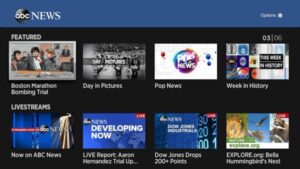Marketers Need to Adapt to Changing TV Viewers

Americans are streaming more content than ever, and broadcasters—and marketers—need to adapt to changing TV viewership if they want to remain significant.
Viewing behavior is shifting dramatically, and linear TV viewing is changing, as more on-demand and streaming content is becoming available. Streaming makes up one in seven minutes of TV viewing for adults age 18-49.
Americans spend 38 hours watching video each week, meaning more and more business for streaming devices as people want to get more content at faster speeds, notes Tom Wolfe, vice president, advertising business development, Roku.
Roku’s streaming platform has 20.8 million accounts. The number of streaming hours of content overall grew 56 percent last year; 5.1 billion hours of content were streamed in Q1 of 2018 alone, and 55 percent of American households subscribe to at least one video streaming service.
“The new living room is likely to be cordless,” says Wolfe, who spoke at Play 2018 in Boston. “Fifty-five percent of people on Roku don’t have a pay TV subscription.”
Today, Roku has relationships with 10 different electronics manufacturers, meaning users can access Roku without buying a separate device. Virtual assistants, powered by machine learning, are behind more and more content interactions today.
More on Entertainment & Video Marketing:
“The barriers to entry are high now, but having an AI or [virtual] assistant will become as common as having a web page,” says Andy Webb, vice president, product strategy and head of voice AI assistants, BBC, noting that the Beeb has been investing in machine learning and working on taxonomies of data, to understand the relationships between content.
“If you want to get to the point of automatically serving content, you have to get to the point of a ‘serendipity engine,’ to understand the content and the individual,” says Webb.
As more and more consumers use personal assistants, these will shape the type of news and content consumers want and need, says Doug Vance, vice president, product development, ABC News.
“Your personal assistant will know the time of day and what type of news or content you want and serve it up to you,” he says. “It’s an ambient experience, because they’re always on. Say the word and they’ll deliver it to you.”
ABC News debuted on the Roku Channel this month. Unlike its more traditional news offering for broadcast TV viewers, ABC on Roku will rarely feature a journalist behind a desk. Rather, reporters are out in the field, where news is happening.
“The concept of a TV news studio is a bit archaic,” he says. “In the future, the audience that is not cable subscribers are more used to watching raw style news on their phone, and content that doesn’t seem as produced, and brings you into the experience.”





























